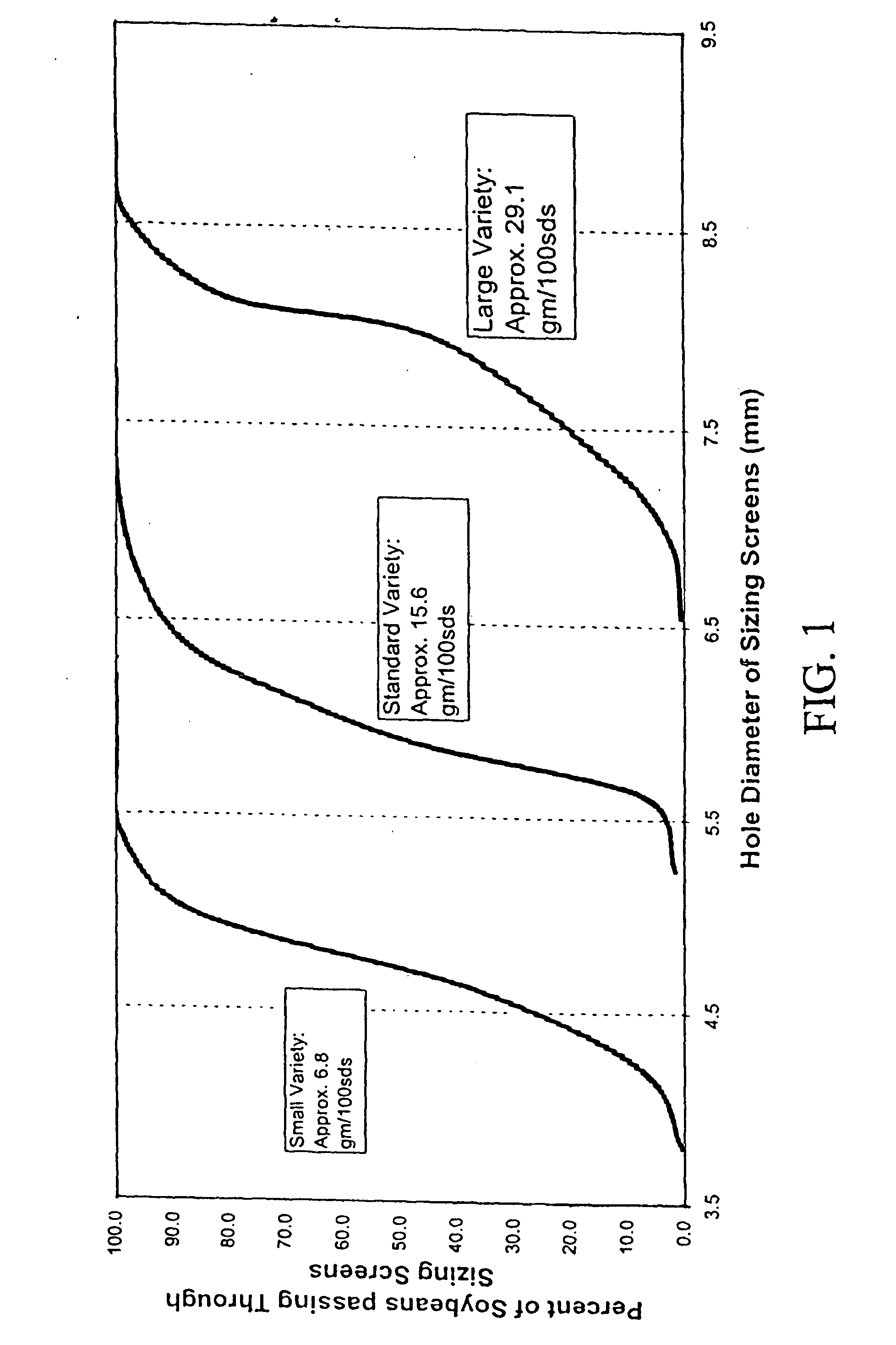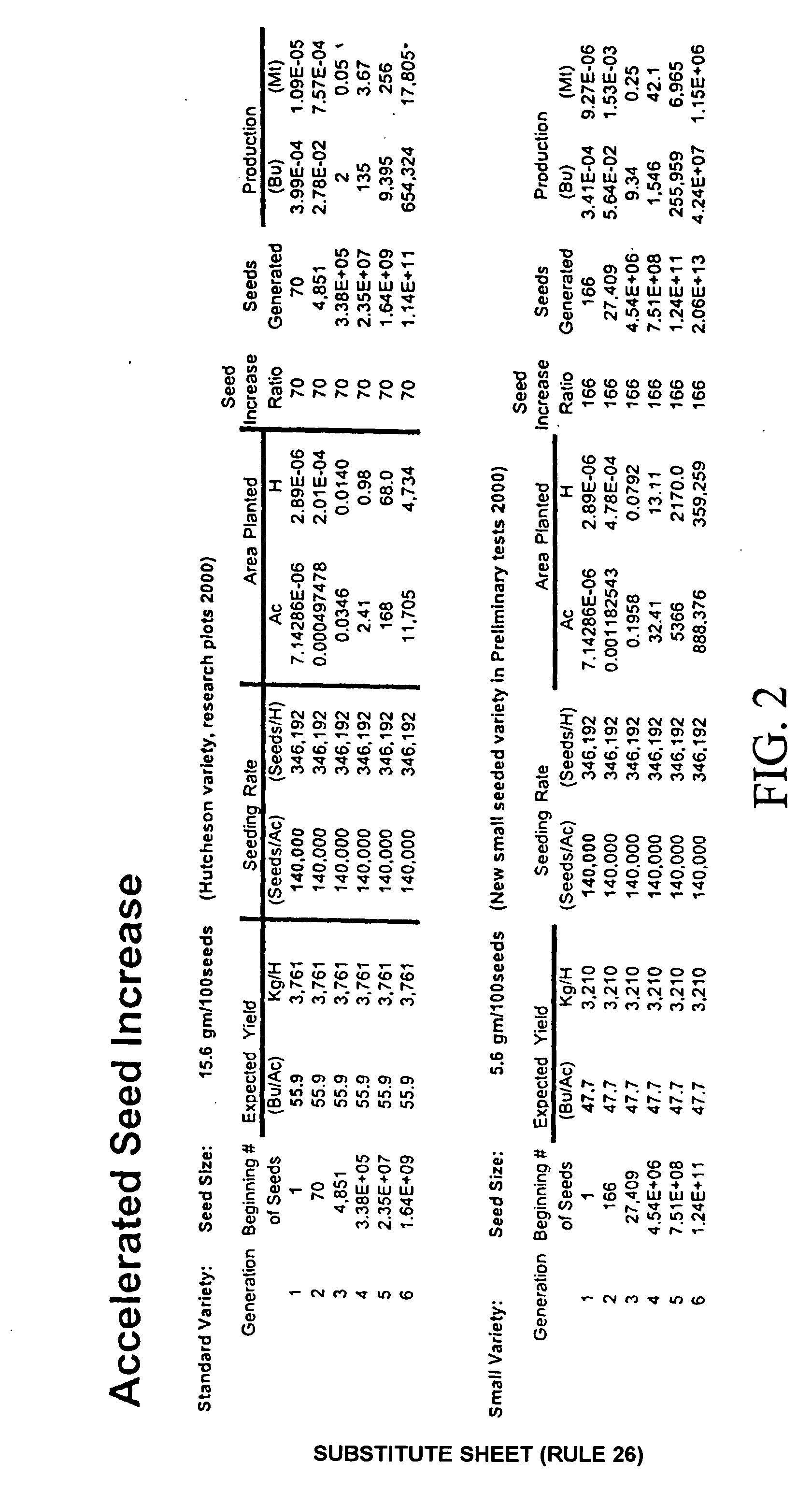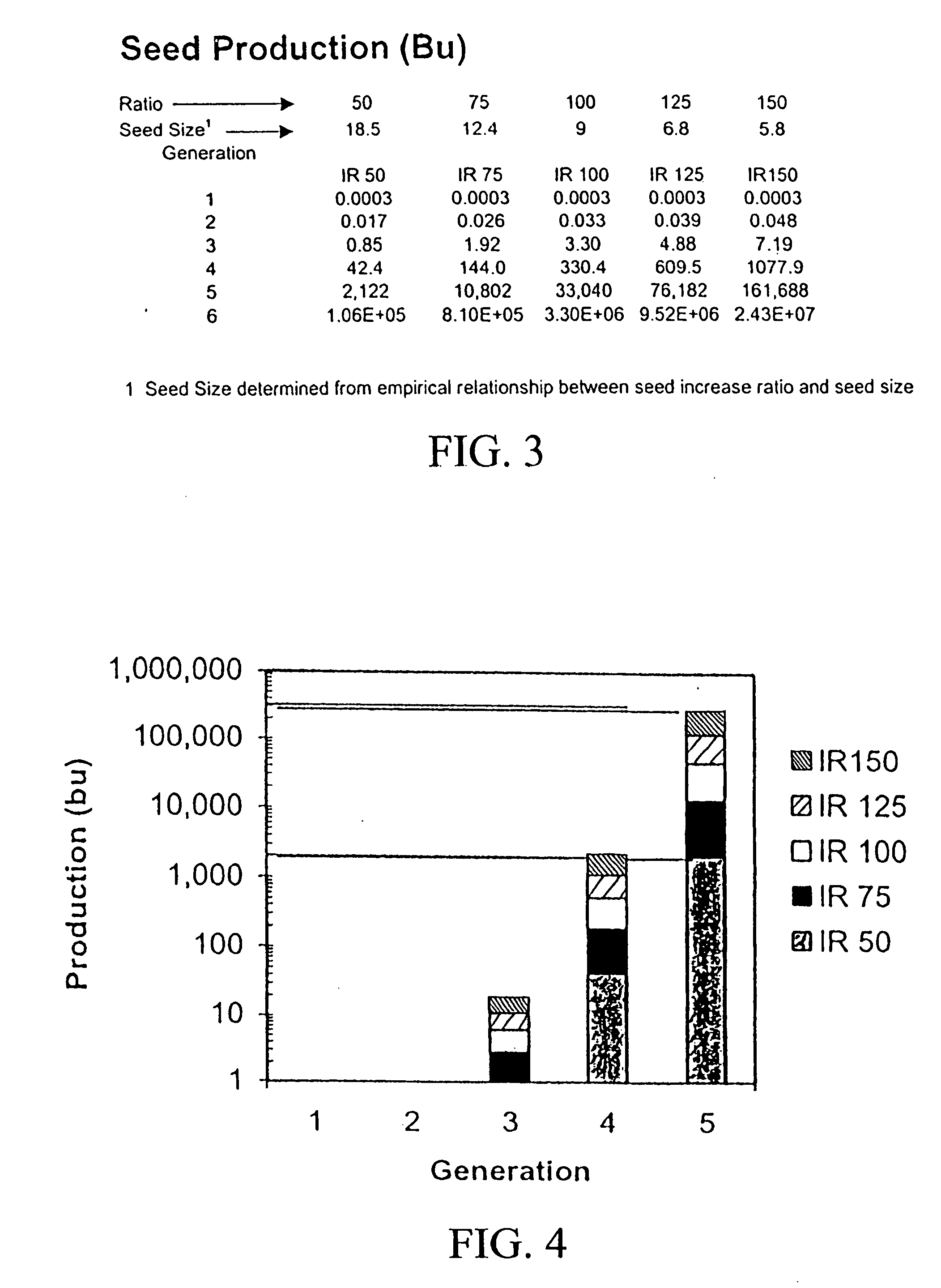Identity preserved crop production
a crop and identity technology, applied in the field of genetic engineering of crops, can solve problems such as serious undesirable consequences, soybean market suffering from contamination potential, and potential damaging effects
- Summary
- Abstract
- Description
- Claims
- Application Information
AI Technical Summary
Problems solved by technology
Method used
Image
Examples
example 1
[0054] Small variety soybean sizes can be used in the practice of this invention. The seed size distribution for a typical small soybean variety is from less than 3 mm in diameter to about 6 mm in diameter. With the greatest percentage of measured sample at about 4 mm in diameter, the percentage of measured sample rapidly declines as the seed size approaches 6 mm in diameter.
[0055] A small soybean variety, such as Montague Farms' MFS-555, is selected for its characteristic size and ease of transformation. The soybean is transformed to carry a gene to express a specific trait. For example, the soybean may be transformed to express a pesticidal feature, carry an industrial intermediate or carry a pharmaceutical. Transformed small variety soybean seeds are planted and allowed to grow until ready for harvest. When the seeds are ready for harvest, they are picked and separated according to size.
[0056] By selecting only small variety soybean seeds for transformation, the ability for separ...
PUM
| Property | Measurement | Unit |
|---|---|---|
| diameter | aaaaa | aaaaa |
| diameter | aaaaa | aaaaa |
| diameter | aaaaa | aaaaa |
Abstract
Description
Claims
Application Information
 Login to View More
Login to View More - R&D
- Intellectual Property
- Life Sciences
- Materials
- Tech Scout
- Unparalleled Data Quality
- Higher Quality Content
- 60% Fewer Hallucinations
Browse by: Latest US Patents, China's latest patents, Technical Efficacy Thesaurus, Application Domain, Technology Topic, Popular Technical Reports.
© 2025 PatSnap. All rights reserved.Legal|Privacy policy|Modern Slavery Act Transparency Statement|Sitemap|About US| Contact US: help@patsnap.com



